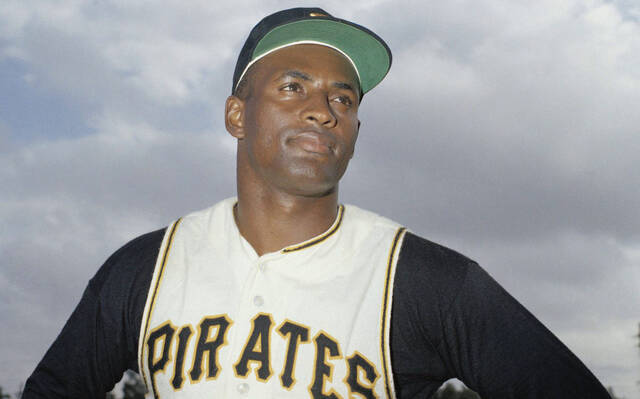Greg Fulton: 50 years later, remembering the greatest Pirate of them all
On Sept. 30, 1972, Roberto Clemente in his last at bat as a Pittsburgh Pirate stroked his 3,000th hit, an accomplishment achieved by only 33 players in baseball history.
Sadly, three months later, Roberto Clemente, the greatest Pirate of them all, would be dead at age 38.
On New Year’s Eve 1972, Clemente was doing something that was very much in his character: helping those less fortunate. Since he had joined the Pirates as a rookie in 1955, he had spent a lot of the off-season doing charity work in his native Puerto Rico and other Latin American countries. On this day, he had chartered a cargo plane to fly to Managua, Nicaragua, to deliver emergency relief supplies after the area had been rocked by a massive earthquake. Clemente was on the flight because he had found that the supplies from three prior relief flights he had arranged had been stolen by corrupt government officials. Clemente felt that his presence would help prevent diversion of this shipment and ensure that the relief supplies would reach survivors. Unfortunately, the plane crashed off the coast of Puerto Rico into the ocean, leaving no survivors.
Watching Clemente play the outfield was like watching Mikhail Baryshnikov dance in the ballet. He was graceful, and his movements were fluid. He made plays that few others could and yet made them somehow look effortless. Base runners learned early not to risk seeking an extra base when the ball was hit to right field. His arm was like a cannon but with a scope for accuracy. Many runners tested his arm over the years, only to see Clemente rifle the ball from the deepest part of right field on a straight line to the catcher for the putout. His 12 consecutive Golden Glove awards from 1961 to 1972 are a testament to his talents as a fielder.
As a hitter, he was consistently one of the best throughout his career. He batted over .300 for 13 seasons and was the National League’s batting champion in five of those years. Clemente also did things that no one had seen before or after. He is the only major league ballplayer to have scored a walk-off inside-the-park grand slam, in a 9-8 Pirates win over the Chicago Cubs in 1956.
Clemente helped to transform a mediocre Pirates team into a league contender. Of the five World Series won by the Pirates, Clemente was a member of two of them (1960 and 1971), and was the World Series MVP in 1971.
In 1973, Clemente was inducted posthumously into the National Baseball Hall of Fame and became its first Latin American player. His jersey, No. 21, was retired by the Pirates in that season and continues to hang in Pirates ballfields. Major League Baseball honored Clemente by renaming the Commissioner’s Award to the Roberto Clemente Award. This award personifies the man himself by recognizing annually a player who “best exemplifies the game of baseball, sportsmanship, community involvement and the individual’s contribution to his team.”
Clemente’s passing was tragic for those both inside and outside baseball. For the city of Pittsburgh and Pirates fans, it was even more heartbreaking. In the 18 years he played for the Pirates, a strong bond had developed. At first, it was a strange love affair. Here was a primarily Spanish-speaking player coming to a town with a very small Hispanic population and little awareness of Spanish culture. Like other challenges in his life, Clemente overcame this one and became one of the most beloved and iconic sports figures in the city’s history because of his love and respect for the game, his team and his adopted city.
And Pirates fans always felt that the team had a chance of winning when No. 21 was in the lineup.
Remove the ads from your TribLIVE reading experience but still support the journalists who create the content with TribLIVE Ad-Free.

